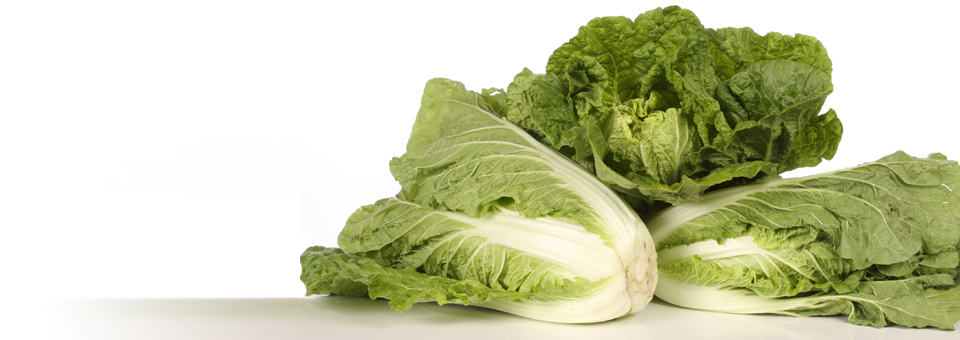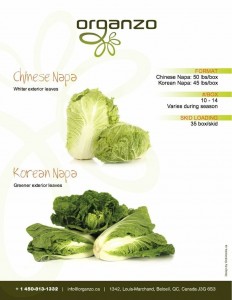Korean Napa
Introduction
The production of this cabbage is a speciality of Organzo.
Our Korean Napa cabbage is different from the Chinese Napa cabbage due to:
-
the colour of its leaves which is dark green on the edges and yellowish in the center,
-
the high density of the cabbage,
-
its long shape.
Thus, for our Korean customers, we want to suggest a variety of Chinese cabbage that resembles the Gaeseong cabbage (the home town of bossam kimchi), which is a heavy, long and large cabbage with large white stems and very green external leaves. The delicate and sweet taste of the leaves is sometimes reminiscent of a turnip or a round cabbage.
Organzo: a strategic and authentic partnership between truck farmers and our agronomic services department, from seed to harvest.
We constantly suggest new varieties to improve product qualityand options for seeds that are less prone to ravagers, diseases and physiological disorders.
We walk through the producers’ fields every week looking at and inspecting the slightest defaults in plants, in order to delay any outbreak of ravagers and/or diseases by applying good agricultural practices, and when needed, by rationally using registered pesticides.
Napa cabbage kimchi
This is a traditional dish (explosive!) that accompanies the majority of Korean dishes. The interest in kimchi comes from its natural fermentation using lactic acid.
The main ingredients in kimchi
-
Napa cabbage, very rich in vitamins and minerals, contains substances with beneficial effects. One can describe it as a freshener, digestive, laxative and stomachic.
-
Daikon, which contains a large volume of water, is rich in vitamin C. When eaten raw, its diastase (digestive enzyme) facilitates digestion.
-
The capsaicine in the chili pepper activates metabolism and burns fat. It controls the beneficial nature of the fermentation.
-
The garlic encourages the secretion of digestive fluids and activates blood flow due to its effects on the nervous system.
-
The ginger, composed of 80% water, is very rich in minerals; its spicy taste and unique aroma (due to the zingerone) are beneficial to the diet.
-
The salt reduces the volume of cabbage through osmosis, which facilitates the exchange of intercellular substances and the action of enzymes, to bring about fermentation.
-
The sugar is indispensable as it transforms into lactid acid.
Caution
For some people: as kimchi is a fermented dish that contains a tremendous amount of fibre, it can cause minor side effects such as gas or bloating. We recommend that you progressively add kimchi to your diet in small quantities to reduce the possibility of these side effects. Consult a dietician to determine if kimchi is an appropriate supplement to your diet.
For other people: eat kimchi in moderation as it is acidic and helps maintain the acid-base balance in the body.


